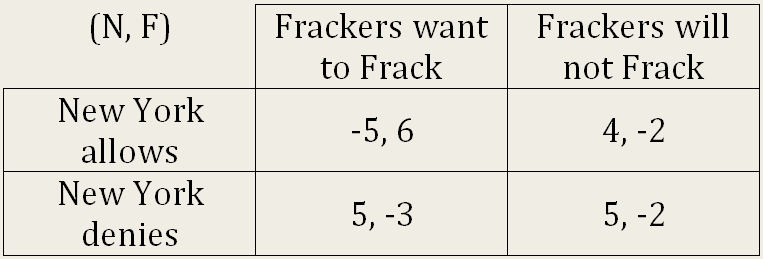Fracking Consequences
Fracking, more formally known as hydraulic fracturing, is the injection of fluids at high pressure into underground rock layers to release energy sources such as petroleum and natural gas. The method is useful mainly for extracting natural gas deposits that are trapped in shale deep underground, and it is the easiest and cheapest way to do so at the moment. Using horizontal fracking has increased natural gas yield and reduced its cost for homeowners. However, there are serious potential risks to environmental health that come with fracking, namely its effects on air and water quality. The fluid pumped underground is usually a mix of chemically treated water and sand, and it is these chemicals and the extracted natural gas that pose the greatest threat to the environment and human consumers when they seep into ground water deposits and rivers. Most notable so far have been the many instances where homeowners were able to light the tap water coming out of their sinks on fire (search “tap water methane” on Youtube for various clips). Carcinogens (chemicals that can cause cancer) are also released into the air during the fracking process, and have likely increased the occurrences of cancers among nearby homeowners, among which breast cancer features prominently.
The state of New York has for a long time been pressured by natural gas companies to allow fracking in numerous counties because of the state’s position over the Marcellus Shale formation. The situation can be compared to that of a game, with New York Governor Andrew Cuomo and his administration on one side, and the fracking and natural gas companies on the other. If the fracking companies choose not to drill in New York and/or New York decides to ban fracking statewide, then the gas companies lose out because they will be unable to take advantage of the potential profits involved with fracking (and depending on Cuomo’s choice, his political position may shift for better of for worse). Environmental and human health concerns are all addressed as well and New York remains safe to live in. If the frackers decide not to frack, it is also possible that the public may view them in a slightly more understanding light. Ultimately these three choices have little variation in terms of outcomes. However, if both New York and natural gas companies give the go ahead for fracking, then the natural gas companies win out and are able to make a profit, while the environment and the health of New York citizens will suffer.

(numbers used are extremely rough estimations)
The potential for environmental hazards has impacted more than just political decisions however. For instance, people seeking to buy homes in northern New York are delaying their purchases out of concern that fracking will negatively affect their lifestyles, while others plagued by failing businesses and farms are willing to lease land to frackers in exchange for money to put food on the table. We can now make a rough sketch of how this network is setup overall, starting from our initial 2-node game with just New York and the natural gas companies. Since the ultimate decision of whether or not fracking will be allowed in New York is decided by Governor Cuomo and his administration, all parties involved form a connection with New York in the hopes that their opinions will have more of an influence on the final decision than other voices. Environmentalists, as well as disapproving residents and potential home-buyers, make up one cluster of nodes against fracking, while natural gas companies and financially troubled residents form another cluster in favor of the practice. Each of the nodes in a cluster likely has favorable connections with each other, since they are all fighting for the same cause.
Looking at the overall structure though, it is very apparent that New York (namely the administration) has the most power over all the nodes. Simplifying all the nodes connected to New York into two clusters, one for and one against fracking, this becomes a simple 3-node path network, where the middle man holds the power over just one decision. Here as well, the New York administration is the one that takes the arguments of all participating parties into account and makes the final decision on whether or not fracking will be allowed in state counties.
Pressure on Governor Cuomo has been extremely high these past few weeks as a result of this relationship. With votes split essentially right down the middle these past few months, Cuomo is set make around 40% of New York unhappy no matter what decision he chooses to make. The debate has ultimately come down to a choice between environmental preservation and energy production. Allowing fracking would produce more jobs and revitalize the stagnating economy, but any health and environmental issues that arise from the practice would make a scapegoat of the administration. Regardless of what the decision within the month will be, Cuomo seems to be looking very deeply into the arguments of both sides for the facts and information that he and his administration will need in order to make an unbiased decision. So long as the governor is working to reach a conclusion that he sincerely believes will be the most beneficial for the state, I do not see any reason why we shouldn’t offer our support and assistance once a choice is made. This decision is by no means an easy one, and at the very least, Cuomo has my respect.
– lostguru
Articles:
2012-09-28 – http://green.blogs.nytimes.com/2012/09/28/fracking-suspense-cuts-into-second-home-sales/
2012-09-17 – http://www.politico.com/news/stories/0912/81266.html
2012-04-06 – http://michiganradio.org/post/fracking-natural-gas-benefits-and-risks


UPDATE: Cuomo has decided to stand with the environmentalists and delay decisions on fracking for another year while they review and restart the regulatory process.
http://www.nytimes.com/2012/10/01/nyregion/with-new-delays-a-growing-sense-that-gov-andrew-cuomo-will-not-approve-gas-drilling.html